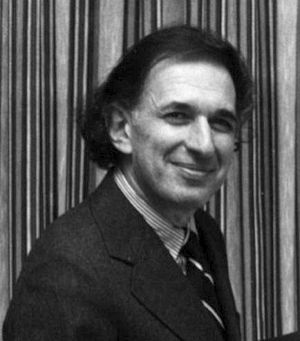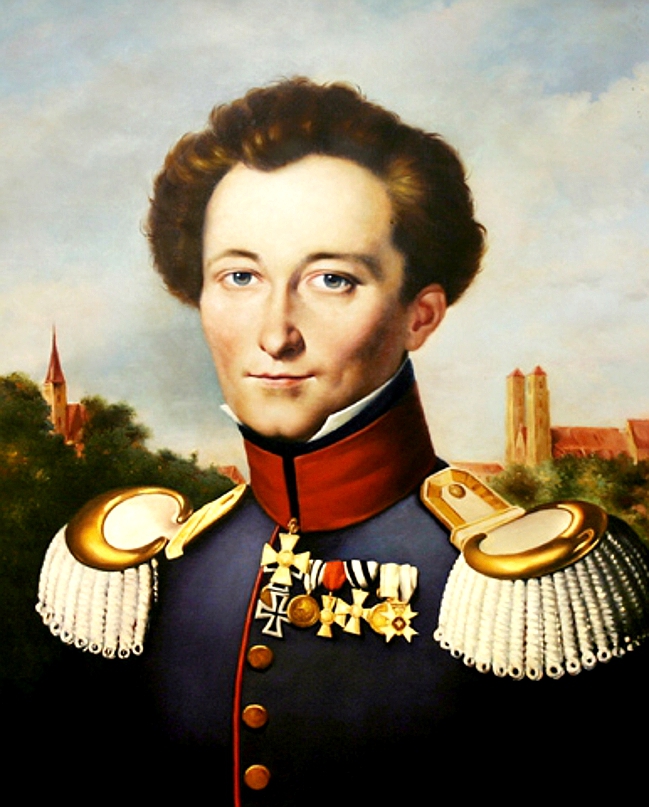strategy+business magazine
by William Duggan

Illustration by Lars Leetaru
 Image via CrunchBase
Image via CrunchBaseHow do companies innovate? Look at Google Inc., widely admired as a great innovator. The company offers toys in the lobby, beanbag chairs, game rooms, and time for employees to work on ideas of their own. Isn’t that what other companies should do too?
The answer is no. These Google methods are derived from an inaccurate theory of creativity: that people need to turn off their analytical left brain and turn on their creative right brain to produce new ideas. In fact, the Google founders did not come up with the original idea for Google itself by using these methods. Instead, they applied a very different method, one that follows a more plausible theory of how the brain produces creative ideas. Unfortunately, Google is just one of countless companies whose methods for innovation are woefully out of date.
Over the past decade, neuroscientists have come a long way in figuring out how ideas form in the human mind. As it turns out, their findings contradict how most companies understand and organize innovation. …
To understand the new model of the brain, and why it matters so much for business innovation, we must go back to 1981, when Roger Sperry won the Nobel Prize for his work on the two sides of the brain. According to Sperry, the right side was creative, artistic, and intuitive, whereas the left side of the brain was analytical, logical, and rational. This split-brain model spread quickly throughout the business world, because it seemed to explain why some people came up with new ideas easily and others struggled. …
Today, brainstorming is nearly universal in business practice around the world. … It is found under different names and with slight variations, but all the versions follow the same basic model: They tell you how to analyze your strategic situation, but they do not tell you how to come up with a strategic idea for what to do. …
In other words, our most-accepted approach to problem solving is grounded in an incorrect premise about the source of creativity in the brain.
How Creativity Works
 Image via Wikipedia
Image via WikipediaNow let’s turn to the more accurate view of creativity, with its roots in modern science. The watershed year is 1998, when
Brenda Milner,
Larry Squire, and
Eric Kandel published a breakthrough article in the journal
Neuron, “Cognitive Neuroscience and the Study of Memory.” Kandel won the Nobel Prize two years later for his contribution to this work. Since then, neuroscientists have ceased to accept Sperry’s two-sided brain. The new model of the brain is “intelligent memory,” in which analysis and intuition work together in the mind in all modes of thought. There is no left brain; there is no right. There is only learning and recall, in various combinations, throughout the entire brain.
![Cover of]() Cover via Amazon
Cover via AmazonNeuroscientist Barry Gordon gives an overview of this newer model of the brain in his book
Intelligent Memory: Improve the Memory That Makes You Smarter (Viking, 2003), with coauthor Lisa Berger. He portrays the everyday intelligent memory of human beings as the greatest inventory system on earth. From the moment you’re born, your brain takes things in, breaks them down, and puts them on shelves. As new information comes in, your brain does a search to see how it might fit with other information already stored in your memory. When it finds a match, the previous memories come off the shelf and combine with the new, and the result is a thought. The breaking down and storing process is analysis. The searching and combining is intuition. Both are necessary for all kinds of thought. Even a mathematical calculation requires the intuition part, to recall the symbols and formula previously learned in order to apply them to the problem. …
Just as the intelligent memory concept has replaced the old two-sided brain theory in neuroscience, companies need to replace brainstorming with methods that reflect more accurately how creative ideas actually form in the mind. And they don’t need to start from scratch. Once we understand how intelligent memory works, we find several existing techniques that fit. After all, human beings have innovated for eons. If we study how innovation actually happens, we can learn how to do it more reliably.
Clausewitz and Motwani
…Business strategy emerged from the military a century ago, … The word strategy entered the English language from French in 1810 for direct military reasons: … And so was born the formal discipline of strategy that business has inherited today.
 Image via Wikipedia
Image via WikipediaThe greatest military scholar of that period was
Carl von Clausewitz, a Prussian, whose lifetime of work led to the book
On War in 1832. … A great general gets a strategic idea as a
coup d’oeil, which means “strike of the eye.” It’s a glance that shows you what to do — a flash of insight. Two steps precede the flash: “examples from history,” when you explicitly study what others have done before you, and “presence of mind,” when you clear your brain of all expectations of solutions. In a clear mind, selected examples from history combine as insight. The last step is resolution, when the flash gives you the will to act on the idea despite the obstacles you face.
Examples from history are a form of intelligent memory. The …brain [is] stocked with what you’ve seen or heard or read about what others have done before. This process takes place naturally in every human brain, but active study can accelerate and improve it. …
The presence of mind Clausewitz describes is akin to the calm state that precedes a flash of insight, which neuroscientists can now measure. … That explains why you get your best ideas not in formal brainstorming meetings but in the shower, or driving, or falling asleep at night — when your brain is relaxed and wandering, instead of focused on a particular problem. Incidentally, brian scans of these masters also show this presence of mind and reveal it as a mental discipline you can learn….
Harnessing Intelligent Memory
… In the late 1990s, CEO Jack Welch and Chief Learning Officer Steve Kerr adopted the concept of making new combinations from existing elements as the basic problem-solving method for the whole company. They used a simple matrix that took the process of intelligent memory — what the brain does in flashes of insight — and turned it into a step-by-step team method. …
Here’s how it works. At the top of the matrix, write down your current understanding of the situation (always as a provisional draft, because your understanding might change). Then comes analysis: List in rows what actions you think you might need to take to succeed in the situation (these too are in draft form, because they also might change). Then ask the most important question you can ever ask to solve any problem of any kind: Has anyone else in the world ever made progress on any piece of this puzzle? List sources to search for an answer to this question, across the top, as columns (in draft again). The team then starts a treasure hunt. They search the sources for elements that might apply to the list of actions, trying to find a good combination.
This matches how your brain works when you have a flash of insight. Your mind wanders from piece to piece of the puzzle, searching its shelves for pieces that go together, and only when it finds them does it know what the full picture looks like. …
Eventually, we can expect more techniques based on the new science of intelligent memory to replace methods from the previous paradigm. Companies that get there first will have a distinct advantage. What innovation methods does your company use, and in which paradigm do they fit, the old view of the mind or the new? The race is on, and to the winner go the spoils.
Reprint No. 10405
Author Profile:
- William Duggan is a professor at Columbia Business School, where he teaches innovation in the MBA, executive MBA, and executive education programs. He is the author of Strategic Intuition: The Creative Spark in Human Achievement (Columbia Business School Publishing, 2007).
Image via CrunchBaseHow do companies innovate? Look at Google Inc., widely admired as a great innovator. The company offers toys in the lobby, beanbag chairs, game rooms, and time for employees to work on ideas of their own. Isn’t that what other companies should do too?
Image via WikipediaNow let’s turn to the more accurate view of creativity, with its roots in modern science. The watershed year is 1998, when Brenda Milner, Larry Squire, and Eric Kandel published a breakthrough article in the journal Neuron, “Cognitive Neuroscience and the Study of Memory.” Kandel won the Nobel Prize two years later for his contribution to this work. Since then, neuroscientists have ceased to accept Sperry’s two-sided brain. The new model of the brain is “intelligent memory,” in which analysis and intuition work together in the mind in all modes of thought. There is no left brain; there is no right. There is only learning and recall, in various combinations, throughout the entire brain.
Just as the intelligent memory concept has replaced the old two-sided brain theory in neuroscience, companies need to replace brainstorming with methods that reflect more accurately how creative ideas actually form in the mind. And they don’t need to start from scratch. Once we understand how intelligent memory works, we find several existing techniques that fit. After all, human beings have innovated for eons. If we study how innovation actually happens, we can learn how to do it more reliably.Cover via AmazonNeuroscientist Barry Gordon gives an overview of this newer model of the brain in his book Intelligent Memory: Improve the Memory That Makes You Smarter (Viking, 2003), with coauthor Lisa Berger. He portrays the everyday intelligent memory of human beings as the greatest inventory system on earth. From the moment you’re born, your brain takes things in, breaks them down, and puts them on shelves. As new information comes in, your brain does a search to see how it might fit with other information already stored in your memory. When it finds a match, the previous memories come off the shelf and combine with the new, and the result is a thought. The breaking down and storing process is analysis. The searching and combining is intuition. Both are necessary for all kinds of thought. Even a mathematical calculation requires the intuition part, to recall the symbols and formula previously learned in order to apply them to the problem. …
Image via WikipediaThe greatest military scholar of that period was Carl von Clausewitz, a Prussian, whose lifetime of work led to the book On War in 1832. … A great general gets a strategic idea as a coup d’oeil, which means “strike of the eye.” It’s a glance that shows you what to do — a flash of insight. Two steps precede the flash: “examples from history,” when you explicitly study what others have done before you, and “presence of mind,” when you clear your brain of all expectations of solutions. In a clear mind, selected examples from history combine as insight. The last step is resolution, when the flash gives you the will to act on the idea despite the obstacles you face.








No comments:
Post a Comment